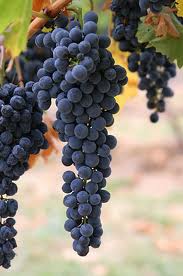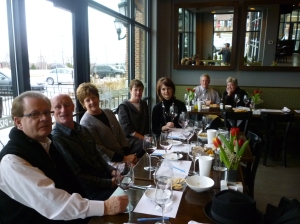The wine trade was invited to attend Paso Robles’ Grand Tasting event yesterday at the Gallery in Chicago. For those of you not familiar with the latest facts, allow me to update you. The Paso Robles Wine Country Alliance is the marketing and promotional arm of the wine region, boasts 500 members which include growers, wineries, and related associate businesses. The economic impact of Pasao Robles and the Greater San Luis Obispo Wine region is calculated at $1,785 billion!
As California’s fastest growing wine region and largest appellation in San Luis Obispo County, the territory encompasses more than 26,000 vineyard acres and more than 180 wineries. More than 40 cultivars are grown and the regions claims to have the widest ranging diurnal temperatures in California which translates to optimal growing conditions for vines and the resultant fruit. Part of this is due to the proximity of some vineyards to the ocean (6 miles in some cases). Just passed the Santa Lucia mountain range, there is fog which blankets certain areas, but it is not as dense and dissipates much earlier in the day than its neighbors to the north. Elevations of vineyards range from 700-2,000 feet and due to its unique geological makeup, 45 different soil types have been identified several of which may be found in one vineyard block. Bedrock primarily derived from weathered granite, older marine sedimentary rocks, and volcanic rocks trace back to the Miocene Age. Calcareous soils with high soil pH values make some vineyards possible without irrigation.
If you’re in the mood for Bordeaux, Rhone and Zinfandel blends, then Paso wines are a must. Less attention has been given to the whites, but I was pleasantly surprised by some innovative blends. Among them was the 2009 Vina Robles WHITE4, Huerhuero Vineyard, a blend of 42% Vermentino, 29% Verdelho, 26% Viognier and 3% Sauvignon Blanc; veritable Spring in a glass. The delicate white flower aromas from the Viognier were surrounded by the strength of Sauvignon Blanc; a wonderful aromatic, fresh wine with good acid. The 100% Sauvignon Blanc from Niner Wine Estates (2009) was another pleasurable experience with its refreshing peach and grapefruit aromas, and I especially liked the smooth lushness of its mid-palate.
Derby Wine Estates, a winery unknown to me before this tasting, produced some very interesting wines including its 2007 Fifteen 10, a white Rhone blend which was very clean with subtle aromas of white pepper, gardenia and a tangy lemon zest on the finish. Also noteworthy was the 2006 Fifteen 10, a red Rhone blend and the 2006 Implico, their Bordeaux blend which was fruit forward but well-balanced.
Other wines of note included Stanger Vineyards 2005 Cabernet Sauvignon Reserve, a fleshy wine dominated by dark fruit aromas and flavors, and my favorite of the day was Justin Vineyards’ 2008 JUSTIFICATION, a blend of 65% Cabernet Franc and 35% Merlot. A wine with 14.5% alcohol, it was blessed with a rich ruby color, rich dark fruit enveloped with a sultry smokiness that, I confess, kept me coming back for more. Being a huge fan of Cabernet Franc, I am always on the lookout for this varietal.
Look out Napa, here comes Paso Robles!
Cheers,
Agi






















